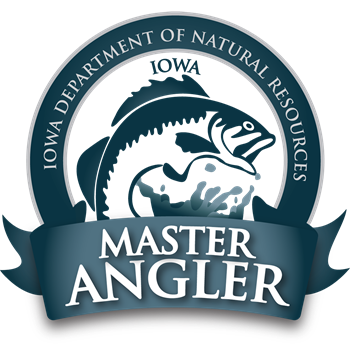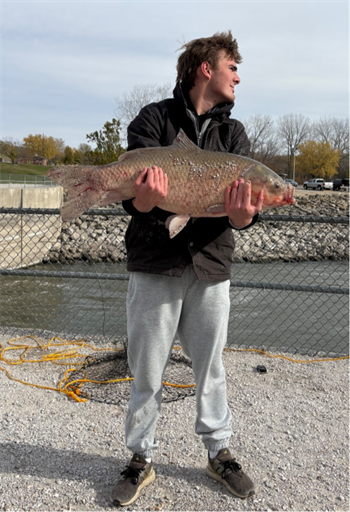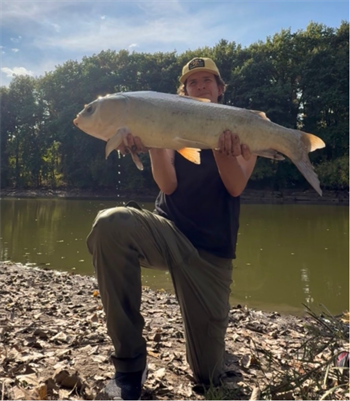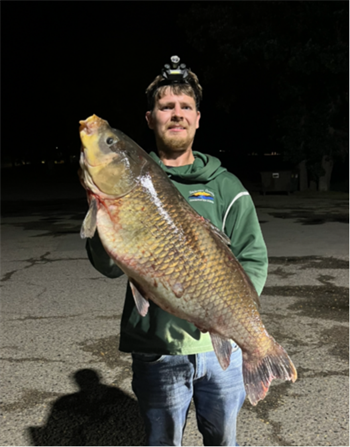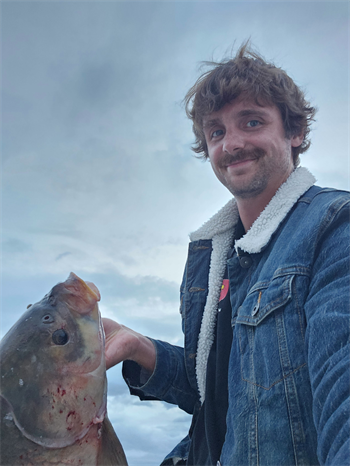Fish Iowa - Fish Species - Bigmouth Buffalo
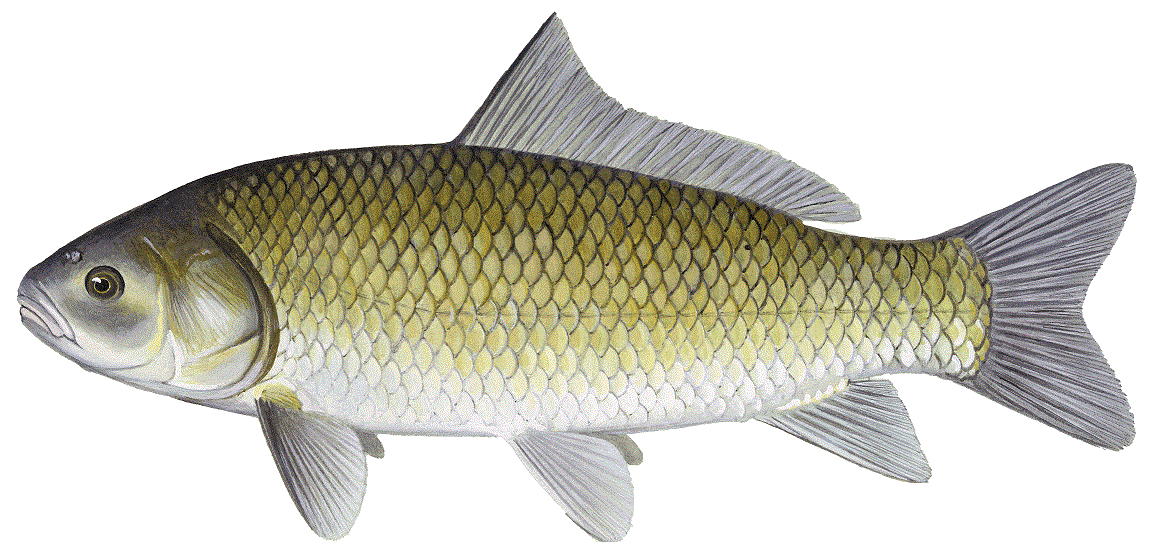
Characteristics
Body color varies from bluish-green dorsally, shading to coppery-blue on the sides, then fading to a light bluish-gray belly. It has a deeply rounded body with small eyes set close to the snout. Its head is large, round, with thin lips surrounding a large, oblique mouth. The lateral line is complete with 32 to 40 large cycloid scales. The dorsal fin is sickle-shaped with 23 to 32 rays. Pharyngeal teeth are short and fragile with about 165 per arch. Adults commonly reach 15- to 27-inches long and weigh 2 to 14 pounds. Individuals over 40 pounds are not uncommon in commercial landings.
Foods
- No results found
Expert Tip
Bigmouth Buffalo are rarely caught on hook and line - if you do, hold on because these fish are strong.
Details
Bigmouth Buffalo are well-adapted for life in shallow, standing water characteristic of lakes, impoundments, marshes and backwaters of large rivers. It is commonly found in deep pool regions, but can also be found in quiet shallow waters and tolerates high water temperatures. They prefer very shallow and slow-flowing water over bottoms rich with debris in mud and silt. It is more tolerant of high turbidity and standing water than other species. This species tolerates very turbid waters, but prefers clear, organically-enriched water with heavy algae and zooplankton blooms.
Spawning starts in April when the water temperature reaches 60 degrees. The adult fish enter flooded marshes along river bottoms enticed by a sudden rise in water temperature or an increasing water stage from runoff. They gather in large schools to spawn over sedges and grasses in shallows about 2 to 3 feet deep. A single gravid female sinks to near the bottom and is surrounded by several males. Together they engage in a series of rushes that pushes the female to the surface while the adhesive eggs are broadcast and fertilized at random. The eggs are unattended until they hatch after incubating 8 to 14 days. Maturity varies, but most fish are sexually mature and spawn at age 3. A 10-pound buffalo has around 400,000 eggs.
Bigmouth Buffalo grow fast. Fish from the Wisconsin River had calculated body lengths of 5.2-inches at age 1 to 33.3-inches at age 12. Growth varies with location. It is often found in populations with huge standing stocks, mostly in lakes and impoundments. Populations densities of up to 1,200 pounds per acre have been reported in Iowa.
The Bigmouth Buffalo competes directly with many other fish species at different stages of development. It has a definite behavior pattern to form schools. They are a hardy fish species that can endure oxygen concentrations less than 1 ppm and equally able to survive warm water temperatures over 90 degrees.
Recent stream sampling information is available from Iowa DNR's biological monitoring and assessment program.
Sources:
Harlan, J.R., E.B. Speaker, and J. Mayhew. 1987. Iowa fish and fishing. Iowa Conservation Commission, Des Moines, Iowa. 323pp.
Loan-Wilsey, A. K., C. L. Pierce, K. L. Kane, P. D. Brown and R. L. McNeely. 2005. The Iowa Aquatic Gap Analysis Project Final Report. Iowa Cooperative Fish and Wildlife Research Unit, Iowa State University, Ames.
Illustration by Maynard Reece, from Iowa Fish and Fishing.
Distribution Map
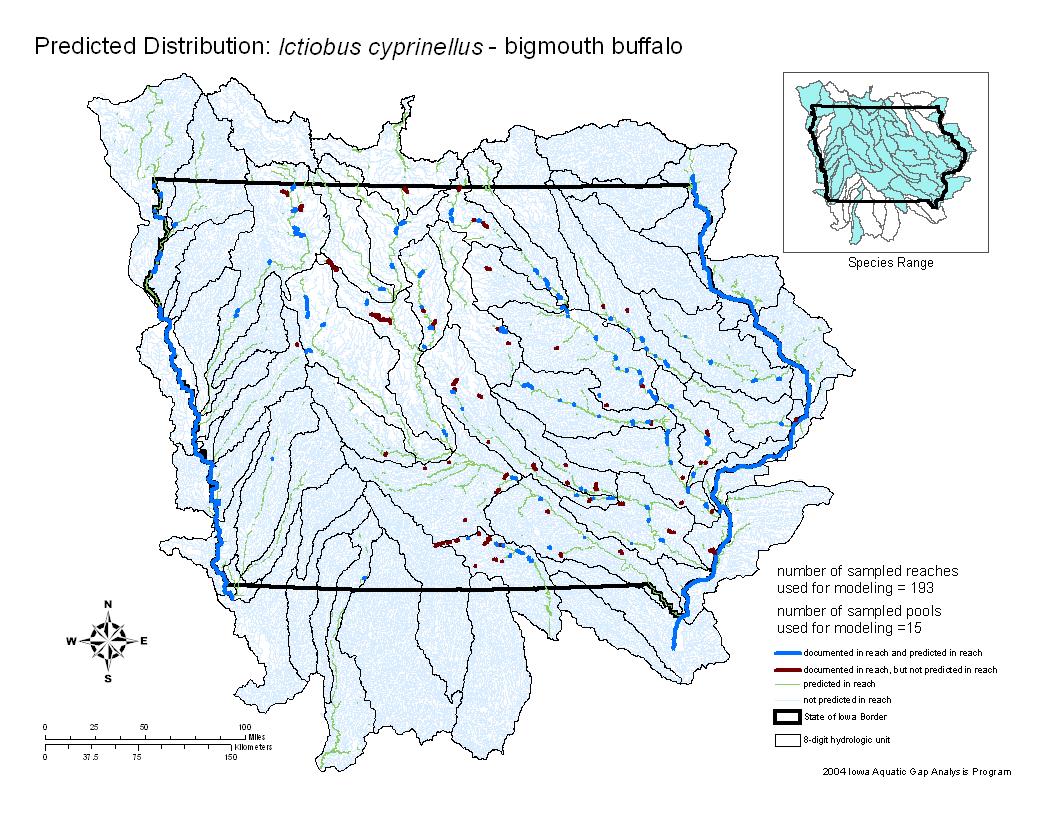
The Bigmouth Buffalo is found throughout most of Iowa, except for the Nodaway River drainages. It is most abundant in the Mississippi and Missouri Rivers and their larger tributaries, in the river impoundments and in some natural lakes. It is less common in the smaller tributaries of the Missouri River in the southwest Iowa.
See our most recent distribution data for this species on the Iowa DNR's Bionet application.
Fish Surveys
Tip: Click Species Length by Site, then use the dropdown to filter by fish species of interest.Where this Fish Is Found
Alice Wyth Lake
Ambroson Pit (north)
Atlantic Quarry Pond 2
Atlantic Quarry Pond 3
Atlantic Quarry Pond 4
Bartlett Lake
Big Lake (Including Gilbert's Pond)
Big Sioux River
Big Timber Complex
Burlington Street Dam
Cedar Lake
Cedar River (Cedar Rapids to Moscow)
Cedar River (La Porte City to Cedar Rapids)
Cedar River (Moscow to Columbus Junction)
Clear Lake
Coralville Reservoir
Des Moines River (Farmington to Keokuk)
Des Moines River (Saylorville to Red Rock)
Des Moines River (Stratford to Saylorville Lake)
East Nishnabotna River
Five in One Dam
Folsom Lake
Gateway Park North
Iowa River (Columbus Junction to Mississippi R)
Iowa River (Coralville Lake to River Junction)
Iowa River (Iowa Falls to Marshalltown)
Iowa River (Marshalltown to Coralville Lake)
Iowa River (River Junction to Columbus Junction)
Iowa River Landing Pond
Lake Macbride
Lake Manawa
Little Sioux River (Correctionville to Missouri R)
Little Sioux River (state line to Linn Grove)
Meyers Lake
Middle Sabula Lake
Missouri River (Council Bluffs to state line)
Missouri River (Little Sioux to Council Bluffs)
Missouri River (Sioux City to Little Sioux)
Mohawk Park Lake
North Twin Lake
Pool 16, Mississippi River
Pool 17, Mississippi River
Pool 18, Mississippi River
Pool 19, Mississippi River
Prairie Park Fishery
RAPP Park Lakes
RecPlex Pond
Red Rock Reservoir
Sand Lake
Saylorville Reservoir
Seminole Valley Park Lakes
Skunk River (Coppock to Mississippi River)
Skunk River (Rose Hill to Coppock)
Spirit Lake
Storm Lake (incl Little Storm Lake)
Swan Lake
Swan Lake
Terry Trueblood Lake
Tuttle Lake
Wapsipinicon River (Oxford Junct to Mississippi R)
Wapsipinicon River (Troy Mills to Oxford Junction)
West Nishnabotna River
West Okoboji Lake
West Swan Lake S.W.M.A.
